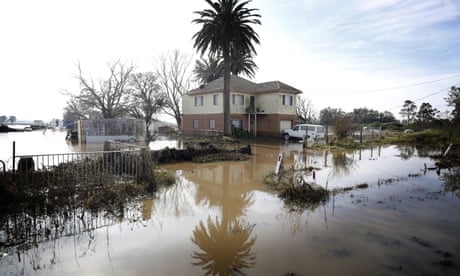- by foxnews
- 23 May 2025
‘In two years no one will care’: expert in institutional amnesia explains where flood response falls down
‘In two years no one will care’: expert in institutional amnesia explains where flood response falls down
- by theguardian
- 16 Jul 2022
- in news

Australia's response to flood emergencies will only improve when governments can maintain focus in the times between crises, a researcher specialising in the topic has warned.
Speaking before the release of reports into this year's floods in Queensland and NSW, Dr Alastair Stark, an associate professor of public policy at the University of Queensland, said disaster inquiries often produced effective lessons only for their implementation by governments and agencies to stall.
Stark, whose work included an analysis of crises and subsequent public inquiries in Australia, New Zealand, Canada and the UK, is researching "institutional amnesia" and public services under an Australian Research Council grant.
"Many agencies can't hold a lot of memory across time and that means they can recycle ideas and return things they've done before, thinking they're novel and new," Stark said.
"It's not the case that things are forgotten if you have a flood every year, but if you're on a 10-year cycle, then amnesia is really relevant."
He said a shift in media spotlight and changes in governance and the government's priorities can push managing a crisis to a lower priority, where the amnesia sets in - until another event arrives.
High staff turnover also leads to agencies losing valuable experience after these traumatic events, further hampering memory.
"You need to keep banging the drum in the quiet times when no one cares. You need resources, you need people, and you need a willingness to manage lessons and maintain them. And that's really tough," he said.
The focus has to be ongoing, he said, otherwise it's a "kneejerk" reaction from one event to the next.
"It's a policy area that's obviously defined by big focusing events, but in two years, no one will care about it and that's the frustration."
A 2015 Productivity Commission report estimated that 97% of federal disaster funds were spent on recovery - the most public, visual stage of crisis management - compared to only 3% spent on mitigation, preparedness, and resilience.
After floods devastated parts of Queensland and NSW earlier this year, the two state governments committed to do more work on improving resilience.
The Queensland government announced a $741m fund, from which grants can be made to raise, retrofit or have homes voluntarily bought back.
Resilience NSW has also distributed grants to flood-hit communities, including from the Disaster Risk Reduction Fund.
Stark said underfunding has hampered most public agencies' capacity to deliver on recommendations from inquiries, but stressed that the crisis management field continually encountered barriers that needed greater consideration at state and local level.
"In other policy areas you have advocates for communities: First Nations sovereignty, social policy, income or the environment," he said.
"Those advocates are there constantly so the government can't forget about it.
"But then if you look at disaster management you have, typically, a small community of directly affected people.
"That's why we say that disaster management is a policy without a public. The smaller events, those are the ones that are typically forgotten because they don't have a public across the 10 years it might take to make a significant change."
Local and regional councils needed more funding, he said, as any lessons learned would need to have relevant context applied by those with on-the-ground experience. Stark said councils would need extensive support to move beyond "rates, rubbish, and roads" and into more challenging tasks across crisis mitigation, preparation, response, and recovery periods.
Repeated flood events in the two states could result in a sustained public spotlight counteracting the amnesia, he said, and result in more mitigation and preparation work being planned and completed.
"In places like Lismore, that will definitely happen. We see that time and again, where local communities become invigorated and enlivened and much more active, for obvious reasons, and we see changes. We saw that in Brisbane after the 2011 floods. But the question is, how do you maintain that interest?"
The NSW flood inquiry will deliver its report at the end of this month, while Queensland's review is due before 31 August.
Stark said public inquiries had proven very effective in Queensland, particularly into the procedures at Wivenhoe Dam, which he said had clearly improved between the 2011 and 2022 flood events.
"I think we're in a really good place, certainly in comparison to many other countries, and especially in Queensland. Our blue-light responders, our operational dimension, we're as good as anywhere."
"To be fair, most emergency services, most disaster management agencies around this country, they know what they have to do and they can do it. It's just that these things are overwhelming. By definition, a disaster has to be overwhelming, but we can certainly do better at the lesson-learning in the long periods between these events."
- by foxnews
- descember 09, 2016
United Airlines flight returns to Hawaii after concerning message found on bathroom mirror; FBI investigating
United Airlines Flight 1169 to Los Angeles returned to Hawaii after a "potential security concern" aboard the plane. The FBI and police are investigating.
read more


